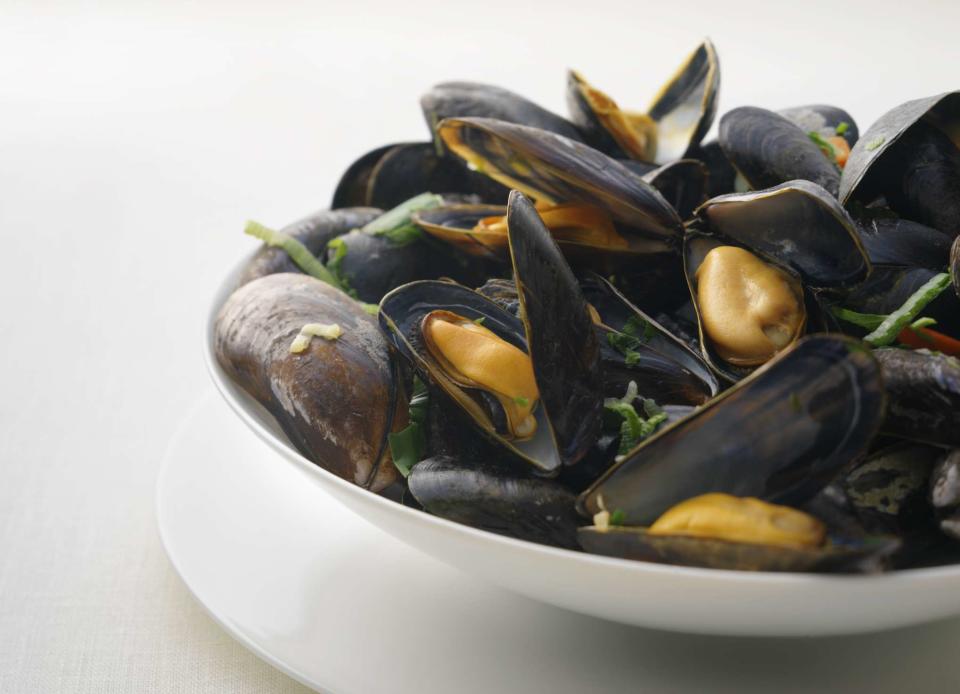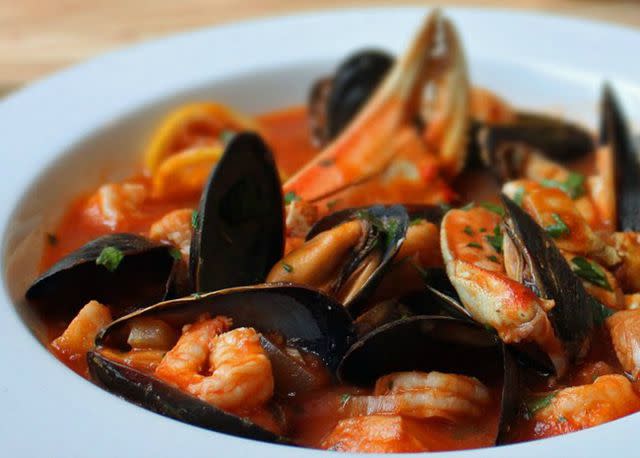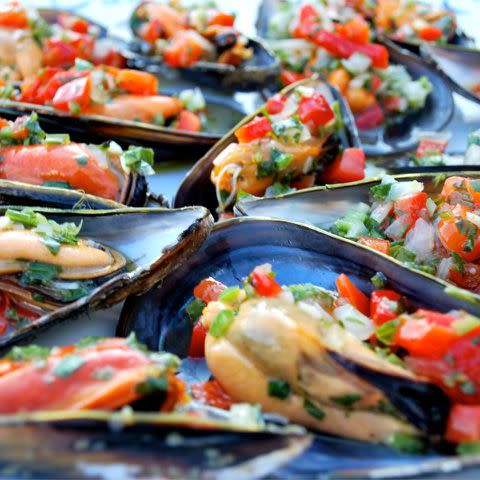How to Buy, Store and Cook Mussels the Right Way
Learn how to master mussels and you've got an elegant meal anytime.

Mussels have been eaten in restaurants for so long that most of us don't think of making them at home. But in fact, mussels are one of the easiest things to prepare. Yes – even easier than salmon! There's simply no need to be intimidated by these small almond-shaped shells; learn everything you need to know right here.
What Are Mussels?
Mussels are a type of bivalve mollusk, in the same family as clams, oysters, and scallops. And like all those, they are a saltwater species, growing in habitats all along the Atlantic coast spanning from Virginia up to the Arctic.
Related: Mussel Recipes That Make Impressive Weeknight Meals
Their longer shells are delicate for the species, chipping a bit easier, and as such, they are not shucked. Steaming opens them up and their plump, internal briny pillow of meat. They can then be removed to be eaten as is, added to a stew, or even pickled.
What Do Mussels Taste Like?
Mussels are delicate, slightly sweet, and truly elegant in flavor. They aren't overly salty, and their texture is like a meaty mushroom. An overcooked mussel is rubbery and hard to chew, so heat them gently.

Get the recipe: Chef John's Cioppino
Types of Mussels
The majority of mussels are farmed, oval-shaped, and dark blue-black in color. A green variety grows in Asia and New Zealand, and though freshwater mussels look similar to the navy variety, they are a slightly different species and aren't usually eaten.
Likely, you've seen mussels labeled PEI. These are the variety most likely in your store, and it stands for Prince Edward Island – an area of Canada that produces the largest amount. These are Mytilus edulis, a species known for its blue shell.
Mussels vs. Clams
Though related through their bivalve mollusk category and cost-effective flavor, mussels and clams taste and look different.
Clams are rounder and light gray or off-white in color, with a sweet, yet salty flavor that boasts a healthy amount of mineral-ish taste. The flavor of the clam will be a representation of the water it grew in.
Related: The Easy, One-Pot Seafood Dinner That Feels Like a Special Occasion
Mussels are longer, more oval-shaped, and dark blue or greenish-black in color. They tend to grow in controlled environments so they're not as flexible in size or flavor.
How to Cook Mussels
If the mussels you purchased at the store have little "beards" – stringy bits sticking out of their shells – pull them off or use kitchen shears to trim them.
You've probably heard of sandy mussels, but the ones you would buy in the store have likely already been through the laborious process of flushing out the grit, and you shouldn't need to worry.

Get the recipe: Mussels Vinaigrette
Sort through your spoils and toss any mussels already opened, cracked, or that look discolored. (If you find one partially open, you can tap it gently, and if it doesn't immediately close, it should be discarded.) They should be fully closed and smell like the sea, without any hint of pungent fishiness. If something smells off, throw it out.
Simply pile the mussels into a dry pan, cover them, and cook them over medium-high heat until they open. Then you can stir in some butter and pepper, but that's all you need. The salt will be provided from the mussels themselves, as they release their beautiful, briny liquor.
Mussels are gorgeous when steamed with a little white wine and garlic. It's a classic for a reason. Just be careful not to add too much liquid. You're steaming, not simmering.
Where to Buy Mussels
If you have a nicely stocked local grocery, the seafood counter can supply you with mussels. Otherwise, a specialty seafood market will be your friend.
Related: How To Clean Mussels
You'll want about ¾ to 1 pound per person, depending on if you're intending them to be an appetizer or entrée. Pro tip: purchase more than you think you need. Inevitably, there will be some tossed out for cracks, discoloration, or premature opening before cooking them, and some that don't open after you do.
How to Store Mussels
The mussels you buy are alive. And they need to be kept that way. Unlike other proteins we buy and store in the fridge until consumption, a dead mussel cannot be served.
Keep your purchased mussels in the fridge, in the original bag they came in, likely made of net or mesh. Wrap that bag in a wet paper towel or wet newspaper. Cold and wet is the name of the game to keep mussels alive – which is no surprise given the environment they're used to.
Don't be tempted to try and recreate their environment the way you would if you brought a goldfish home. Storing them in water and sealing them in a plastic bag or other container will suffocate them.
Mussels can be stored on ice Use a metal colander inside a bowl if you're going to go this route and check them often. Avoid storing mussels in the freezer.
Related:
Read the original article on All Recipes.

